The roof played a vital role in ancient Chinese architecture, and its formations were significantly changed and diversified with time. Initially, the traditional Chinese roof only functions as a shelter from rain and sun, but it is given some religious and feudal colors to represent the proprietor's status quo.
There are generally two classes of roofs: for important architectures, and those inhabit imperials, ministers, and eminent individuals, and for commons.
1. Double-eave Hip Roof. It's used in the most important 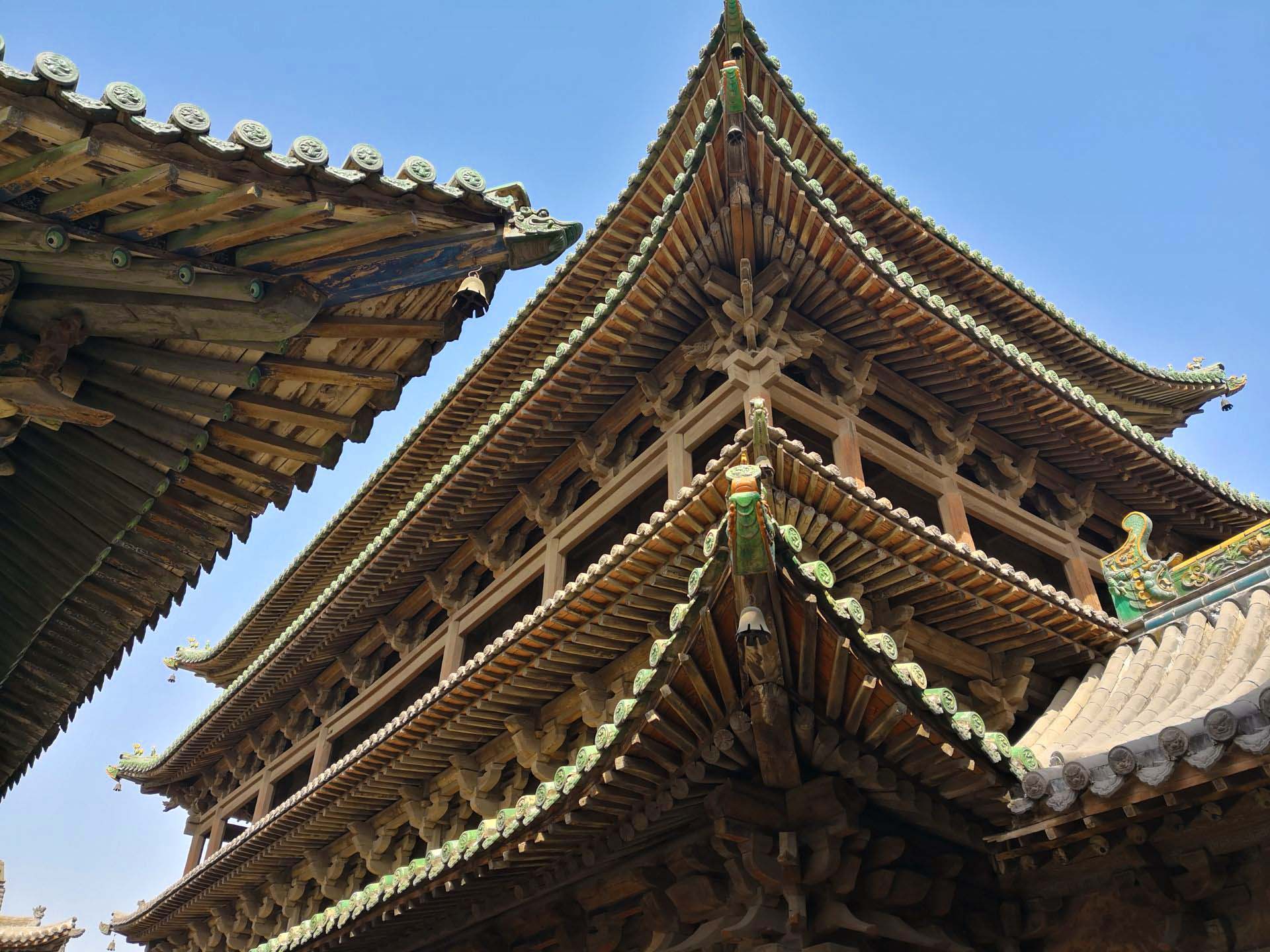 Buddhist temples and the imperial palaces' main hall, symbolizing honor and authority.
Buddhist temples and the imperial palaces' main hall, symbolizing honor and authority.
2. Resting Hill Roof. It's common in palaces, gardens, and temple buildings.
3. Single-eave Hip Roof. It is used in some important buildings.
4. Single-eave Resting Hill Roof. It's also used in some important buildings.
5. Hanging Hill Roof. It's mainly applied in some residential buildings, divine cabinets, and treasuries.
6. Hard Hill Roof. It's mainly used in typical residential buildings.
7. Round Ridge Roof. It's mainly applied in folk buildings.
Other roofs symbolizing no hierarchy: Pavilion Roof. It's mainly used in pavilions, terraces, halls, and pagodas.
It is also known as the four crests, with five ridges and four slopes. 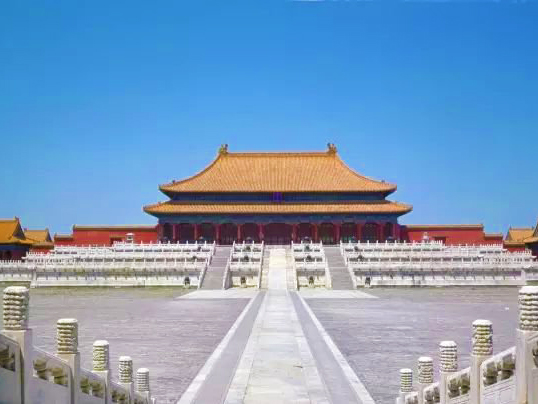 The Hip Roof has four slopes and five ridges, also known as the four-crest roof or five-ridge roof. The double-eave hip roof represents the highest architectural roof. It is mostly used in the main halls of the imperial palaces or the most crucial temple buildings, like the Hall of Supreme Harmony of the Forbidden City, Tian'an Hall of Dai Temple in Tai'an city, Dacheng Hall of Confucius Temple in Qufu city. The single-eave hip roofs are mostly used in the side palace halls or chambers of ceremonial and religious architectures, like the Hall of Prayer for Good Harvests and Hall of Abstinence in the Temple of Heaven, and the Daxiong Hall in Huayan Temple.
The Hip Roof has four slopes and five ridges, also known as the four-crest roof or five-ridge roof. The double-eave hip roof represents the highest architectural roof. It is mostly used in the main halls of the imperial palaces or the most crucial temple buildings, like the Hall of Supreme Harmony of the Forbidden City, Tian'an Hall of Dai Temple in Tai'an city, Dacheng Hall of Confucius Temple in Qufu city. The single-eave hip roofs are mostly used in the side palace halls or chambers of ceremonial and religious architectures, like the Hall of Prayer for Good Harvests and Hall of Abstinence in the Temple of Heaven, and the Daxiong Hall in Huayan Temple.
Also called the nine-ridge roof, the Resting Hill Roof has one formal ridge, 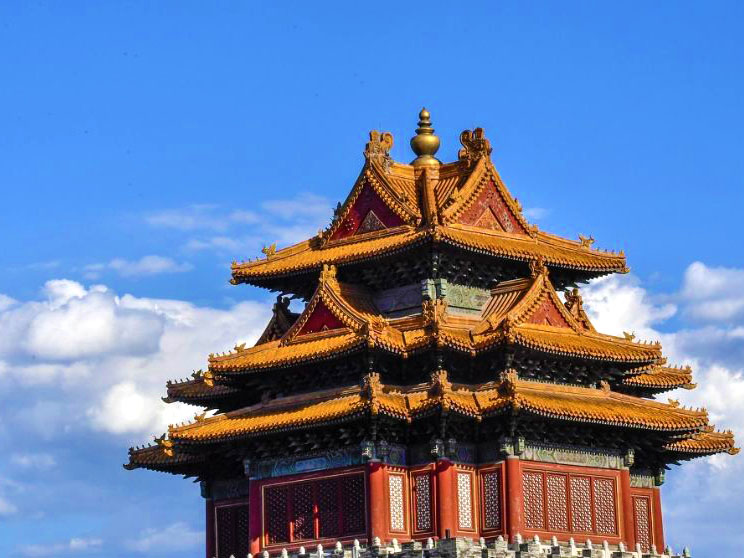 four vertical ridges, and four diagonal ridges. It also has four slopes in back, front, left, and right. The slopes in the back and front are called full-face slopes and the ones in the left and right are regarded as half slopes, and the triangular area above those half slopes are called Shanhua. The double-eave resting hill roofs rank second only to the double-eave hip roofs. They are mostly used in important buildings like the Hall of Preserving Harmony, Gate of Supreme Harmony, and the Gate of Heavenly Peace in the Forbidden City, Bell Tower, and Drum Tower. While the single-eave resting hill roofs are mainly used in other buildings in the palace, governmental houses such s ancestral temples, administrations, departments, and the public halls.
four vertical ridges, and four diagonal ridges. It also has four slopes in back, front, left, and right. The slopes in the back and front are called full-face slopes and the ones in the left and right are regarded as half slopes, and the triangular area above those half slopes are called Shanhua. The double-eave resting hill roofs rank second only to the double-eave hip roofs. They are mostly used in important buildings like the Hall of Preserving Harmony, Gate of Supreme Harmony, and the Gate of Heavenly Peace in the Forbidden City, Bell Tower, and Drum Tower. While the single-eave resting hill roofs are mainly used in other buildings in the palace, governmental houses such s ancestral temples, administrations, departments, and the public halls.
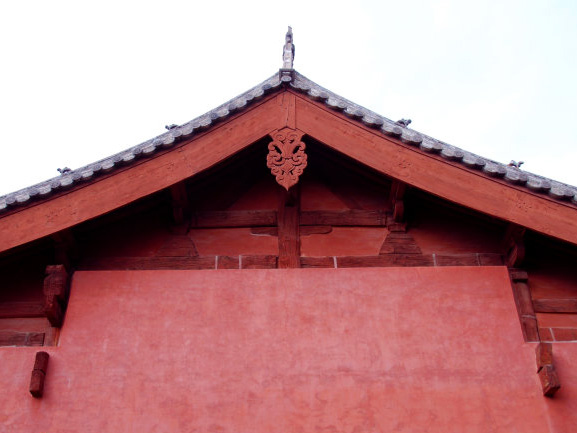
The hanging hill roofs have five ridges and two slopes. The roofs usually extend beyond the gable and get supported by the trusses protruding from below. The four surfaces of the hanging hill roofs also extend beyond the eaves. Such a roof is the early practice of a two-slope roof, but it's not used in important ancient buildings.
The hard hill roof appeared relatively late, 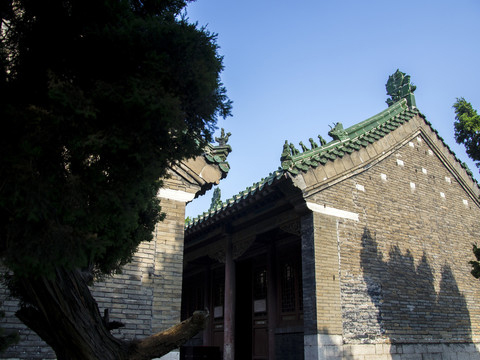 and it was mainly found in the residential buildings of the Ming and Qing Dynasties. Such a roof is usually flush with the gable. As it's only used in typical residential houses, the roof can only be tiled with green slab tiles. The imbrex and glazed tiles are not allowed to be used on such roofs. Thus, there is no hard hill roof in royal buildings or large temple buildings.
and it was mainly found in the residential buildings of the Ming and Qing Dynasties. Such a roof is usually flush with the gable. As it's only used in typical residential houses, the roof can only be tiled with green slab tiles. The imbrex and glazed tiles are not allowed to be used on such roofs. Thus, there is no hard hill roof in royal buildings or large temple buildings.
The Round Ridge Roof has no full-face ridge but vertical ridges, and it is only used in buildings like attics, towers, and pagodas with small areas. 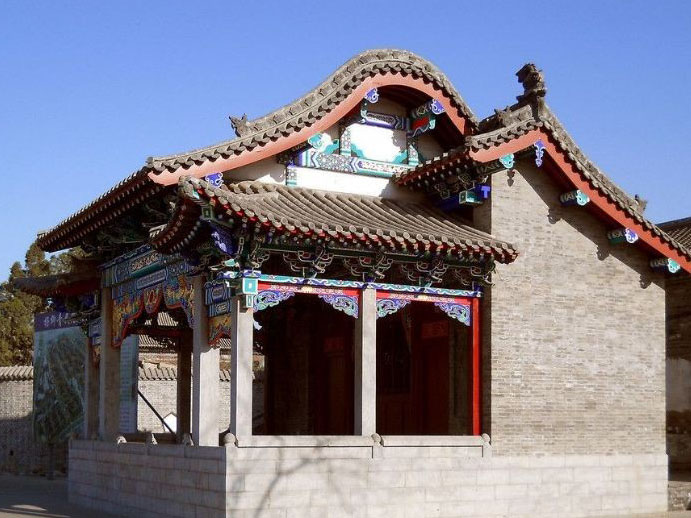 The roof's plane is mostly in squares, regular polygons, or circles, and there is a roof crown on the top. Such roofs are primarily found in the landscaping architectures like Guoru Pavilion in the Summer Palace and the pavilions in the Heilongtan Park. It seldom appears in important buildings, but the Hall of Central Harmony and Hall of Union and Peace of the Forbidden City, and the Hall of Prayer for Good Harvests are exceptions.
The roof's plane is mostly in squares, regular polygons, or circles, and there is a roof crown on the top. Such roofs are primarily found in the landscaping architectures like Guoru Pavilion in the Summer Palace and the pavilions in the Heilongtan Park. It seldom appears in important buildings, but the Hall of Central Harmony and Hall of Union and Peace of the Forbidden City, and the Hall of Prayer for Good Harvests are exceptions.
The roof covering is the roof's surface and mainly refers to the part between the top and the eaves. This part occupies a large area of the top.
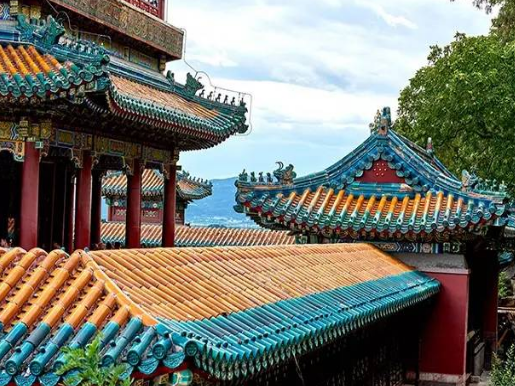
In some buildings in ancient China, the roof near the eaves often had a different color from the upper part. For example, the roof was mostly green, but the eaves were decorated with a horizontal yellow band. It is called "edging finishing."
The full-face ridge refers to the ridge at the highest point of the building roof formed by the intersection of the front and back slopes. Observed from the front of the building, the full-face ridge is a horizontal line. Generally speaking, among the ridges of a building, the full-face ridge is the largest, longest, and most outstanding ridge.
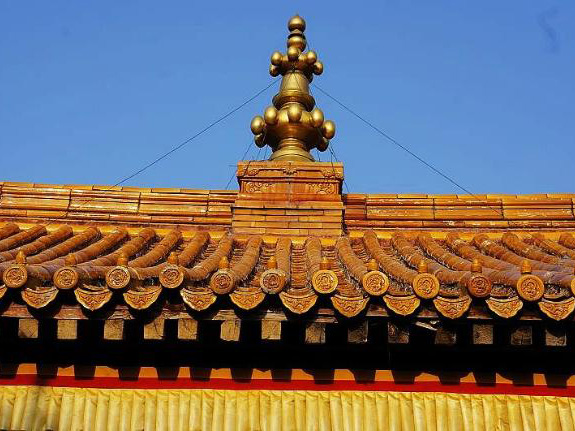
In many buildings, especially the higher-level buildings, various decorations are often set on the roof ridge. In addition to the common roof crown placed in the middle of the full-face ridge, different decoration carvings in the shape of flowers, grass, or dragons are also found on the front and back elevations of the full-face ridge.
In the Hip Roofs, Hanging Hill Roofs, and Hard Hill Roofs, any ridge other than the positive ridge is called a "vertical ridges." While in the Resting Hill Roofs, the ridges other than the full-face ridge and the diagonal ridge are called "vertical ridges." The vertical ridges are all drooping along with the gable board.
In the buildings with Resting Hill Roofs, the ridge starting from the 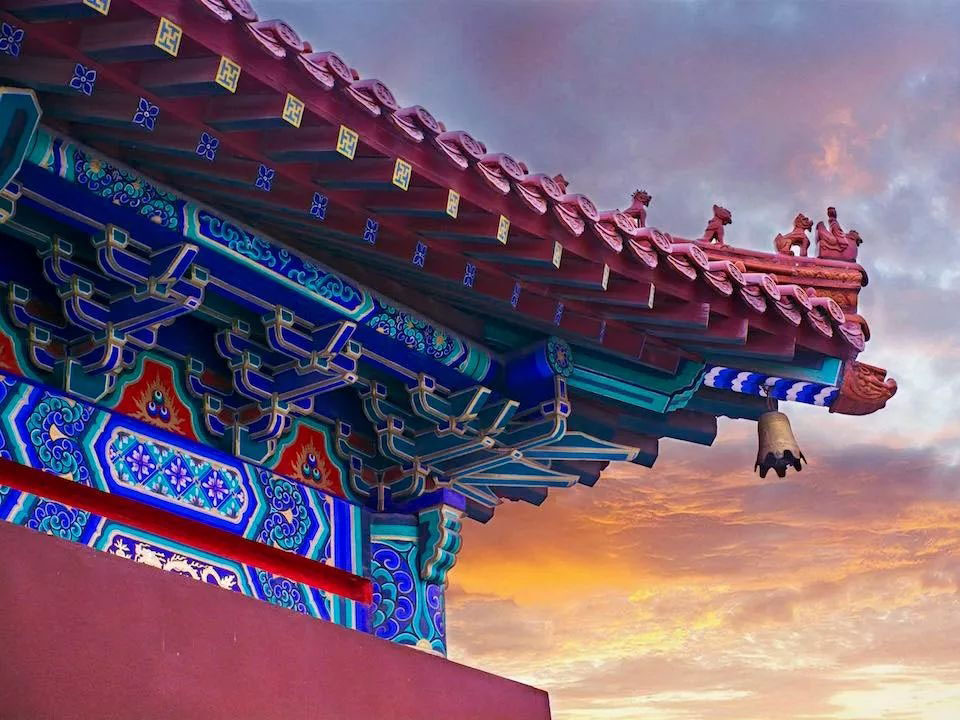 gable board below the vertical ridge and ending in the entangled animal heads is called the diagonal ridge.
gable board below the vertical ridge and ending in the entangled animal heads is called the diagonal ridge.
In buildings with eaves, the part of the eaves that protrudes beyond the truss is called "eaves."
At the lower end of the building eaves, a protruding beast head is fixed on the corner beam casing tenon to protect the beam head from being eroded by rain. This beast head is called "ridge beast."
On the ridge of traditional Chinese buildings, it's common to see tile or pottery decorations in animal shapes; this is called ridge beast. In feudal society, the ridge beasts were only allowed on the palaces and temples. 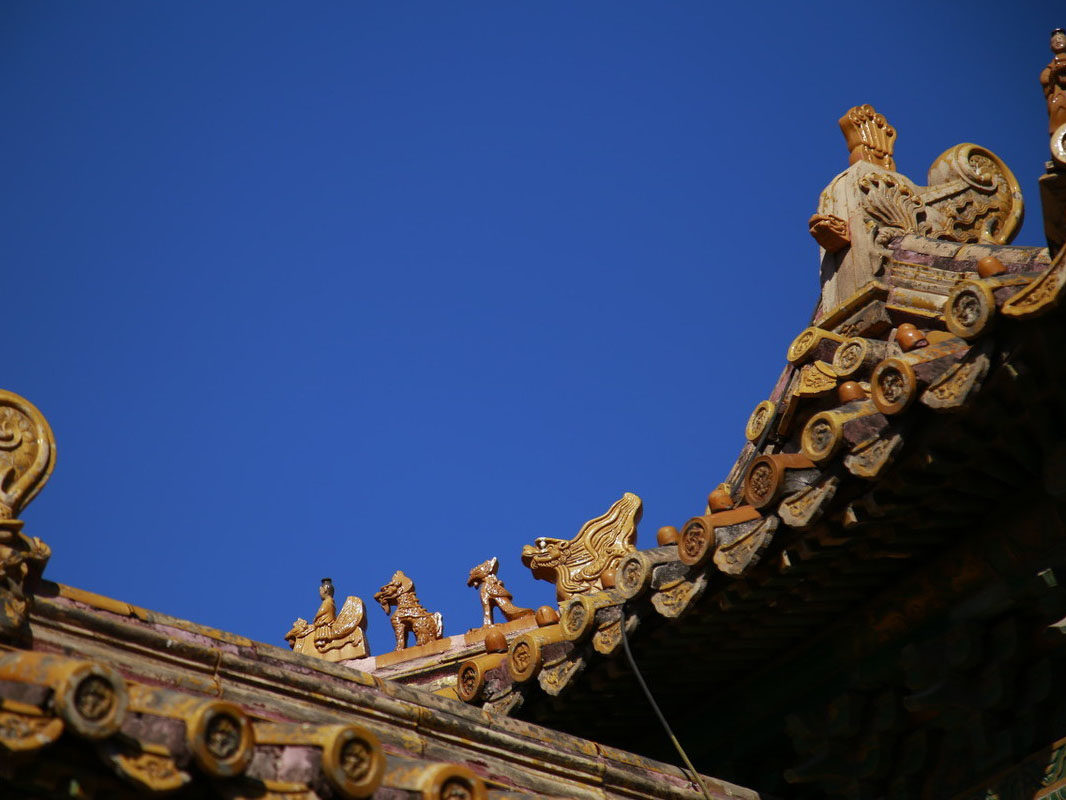 If the emperor or ministers' relatives wanted to set ridge beasts, they must acquire special permission from the emperor. There are also strict hierarchic rules; generally, the singular numbers of ridge beasts are used like 1, 3, 5, 7, and 9 (singularity indicates innocence in Buddhism). The more ridge beasts a building has, the more influential the building is, and the more honorable the owner is.
If the emperor or ministers' relatives wanted to set ridge beasts, they must acquire special permission from the emperor. There are also strict hierarchic rules; generally, the singular numbers of ridge beasts are used like 1, 3, 5, 7, and 9 (singularity indicates innocence in Buddhism). The more ridge beasts a building has, the more influential the building is, and the more honorable the owner is.
The Hall of Supreme Harmony, Hall of Preserving Harmony, and Hall of Central Harmony in the Forbidden City used nine ridge beasts. After the Qing Dynasty was founded, one more ridge beast was added to the roof of the Hall of Supreme Harmony to show the grandness of a new dynasty, making it the only building that used ten ridge beasts. According to the Great Qing Dynasty Code, those ridge beasts are sequenced as the dragon, phoenix, lion, Pegasus, sea horse, Suanni, Xiayu, haechi, Qiu dragon, and the tenth beast.
Dragon, the animal leader of all animals, has horns like deer's, scales like fish's, and claws like eagle's. It can walk, fly, and swim. It's regarded as the symbol of blessings in the Tang and Song Dynasties. While the Ming Dynasty and the Qing Dynasty emperors called themselves the real dragon, it became a symbol of imperial power.
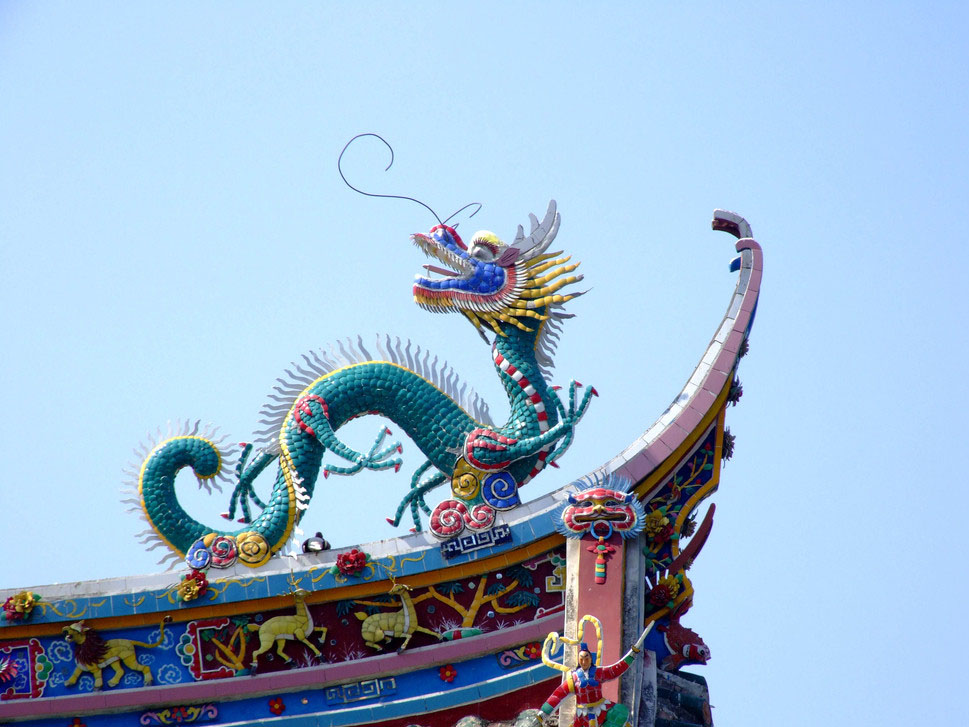
Phoenix is the king of all birds, and it can bring peace to the world. As the symbol of honor and virtue, the phoenix is also the name of the empress.
Lion is the king of all beasts, symbolizing courage and majesty.
The Pegasus is said to run a thousand miles a day, like a gust of wind. It mainly refers to the right horses from the western area.
Seahorse is the incarnation of luck in ancient mythology, symbolizing that power and virtue can reach everywhere, even sea and sky.
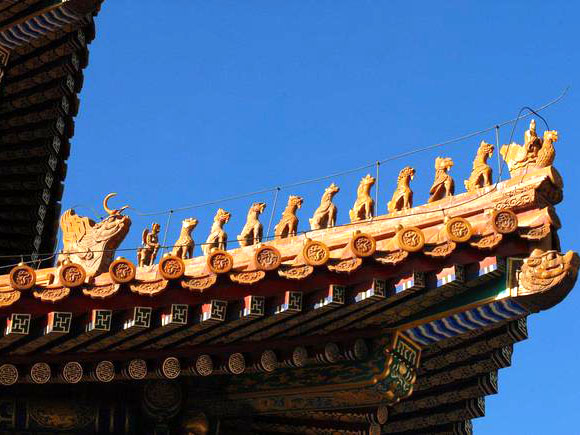
According to ancient records, Suanni is similar to a lion, but some think it’s one of the nine dragon sons.
Xiayu is a special beast from the sea. It is homophonic to rain in Chinese, so people believe it can rain to protect the houses from fire.
It’s a legendary beast, like a lion. People say it can distinguish good from bad, making it a symbol of justice.
It only appeared in the Hall of Supreme Harmony. People just named it the tenth beast based on its position. It has wings and hands that hold metal sticks to fight demons. It’s said it is the embodiment of Leizhengzi.
Ancient Chinese ancient buildings are mostly wooden structures, and the ridges are just woods covered with tiles. The ridge beasts were arranged in the intersection of the two slopes on the front and back; sealing those ridge beasts can prevent rain leakage.
The tiles at the front end of the vertical ridge are easy to slip off due to the tiles' thrust above, and the tile nails were used to fix them. However, the tile nails are higher than the tile surface, which is unsightly and easy to rust. Those ridge beasts can cover the tile nails and prevent them from rusting.
Fire is the most dangerous thing for wooden structures, and the high officials and the nobles were quite superstitious. Therefore, they placed the molded heads of the most powerful and fierce beasts on their roof in the hope of bringing them blessings and keep them safe.
Those ridge beasts can also decorate the roof and make it more graceful, characteristic, grand, and majestic.
Take ridge beasts on the roofs of the palaces in the Forbidden City as an example. The top of the Hall of Supreme Harmony has ten ridge beasts, the roof of the Palace of Heavenly Purity (where the emperor lived) has 9, the roof of the Palace of Earthly Tranquility (where empress lived) has 7, the tops of other palaces where the emperor’s concubines lived have 5. Other subordinating palaces only have 3 or 1.
In traditional Chinese architecture, the triangular wall formed on both sides of the Resting Hill Roof is called Shanhua. 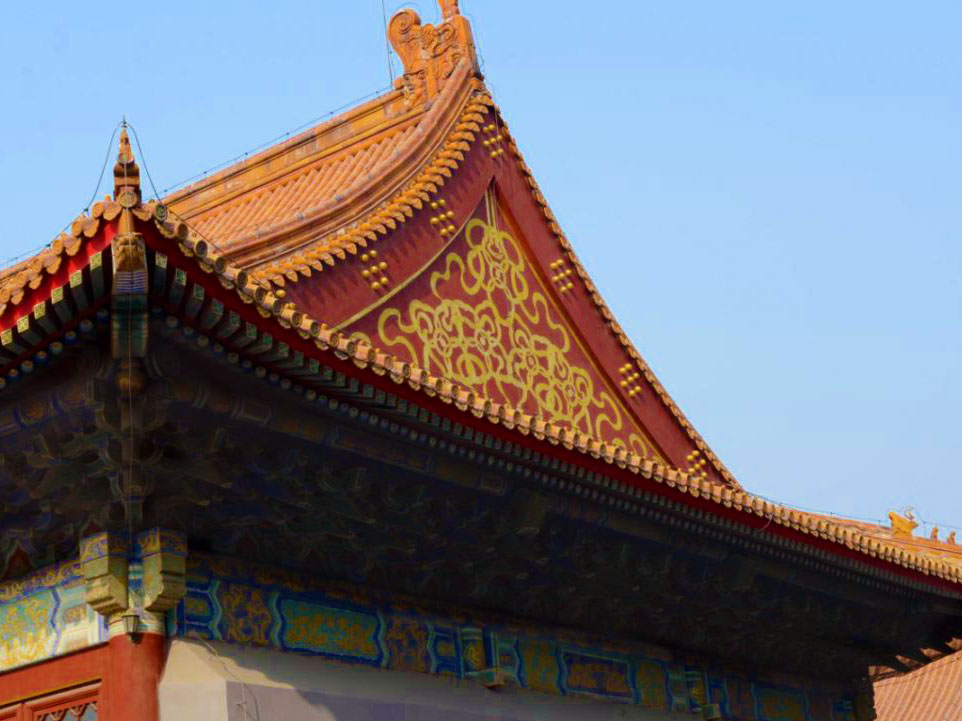
Before the Ming Dynasty, the Shanhua was mostly hollow and slightly decorated with hanging fish and grass. After the Ming Dynasty, bricks, glazing, and wooden boards were often used to seal the hollow part of Shanhua, and the carved sculptures were used as decoration. Since then, the Shanhua gradually developed an important decorative area.
Hanging fish is located under the gable boards on both sides of the Hanging Hill Roofs or Hard Hill Roof. It’s an architectural decorating part, mostly carved in wood. People also call it the Hanging fish because it used to be in fish shape and hangs on the full-face ridge. It’s quite common in folk buildings as the ordinary people were only allowed to use Hanging Hill Roofs and Hard Hill Roofs.
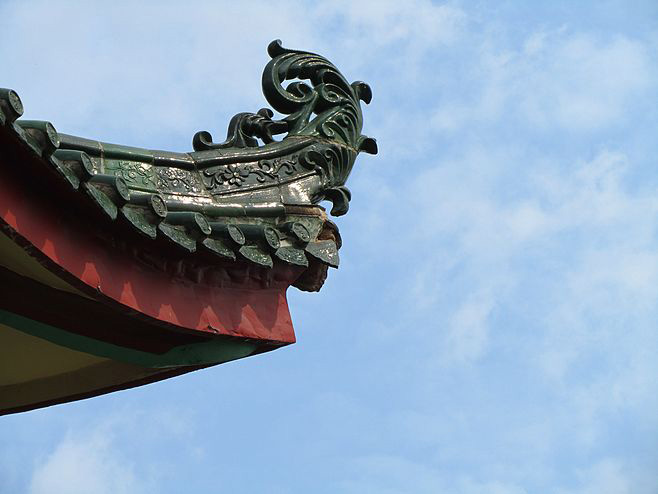
On the endings of the full-face ridge are a pair of mysterious animal sculptures looking like dragon, beast, bird, but are not any of them. These are called the Chiwen, usually set with exquisite flowers and waves and reply on flames, stars, sun, and moon. The location of Chiwen has made it extremely important in ancient Chinese architecture. Where exactly to put them on the full-face ridge can determine how the building looks.
Sunk panel is a decorative wooden structural ceiling in ancient Chinese architecture.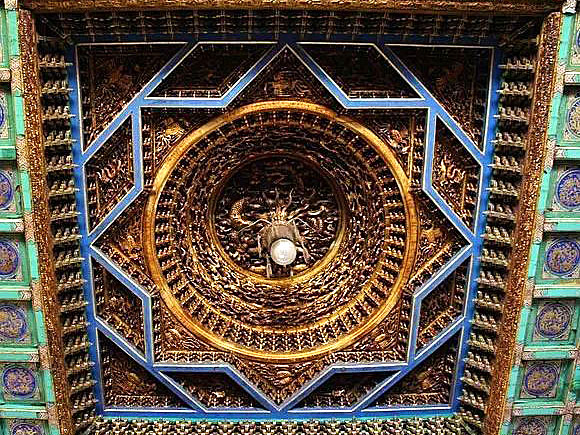 It’s usually sunk ahead to form a vault, and it’s built above the throne of a palace or the Buddhist shrine of a temple. It has different shapes like square, circle, octangle, overlaid in multiple shapes and fashioned with beautiful patterns, carvings, and color painting.
It’s usually sunk ahead to form a vault, and it’s built above the throne of a palace or the Buddhist shrine of a temple. It has different shapes like square, circle, octangle, overlaid in multiple shapes and fashioned with beautiful patterns, carvings, and color painting.
Chinese ancient architecture attaches great importance to details, especially the decorations on the roof. It’s aesthetic and expresses the ethical norms, making it one of the dazzling pearls in the world of architectural aesthetics.
The Beauty of Quadrangle Courtyard (Si He Yuan)
Copyright © 2019 Lily Sun China Tours International, Inc. Terms &conditions | Privacy Policy | Sitemap